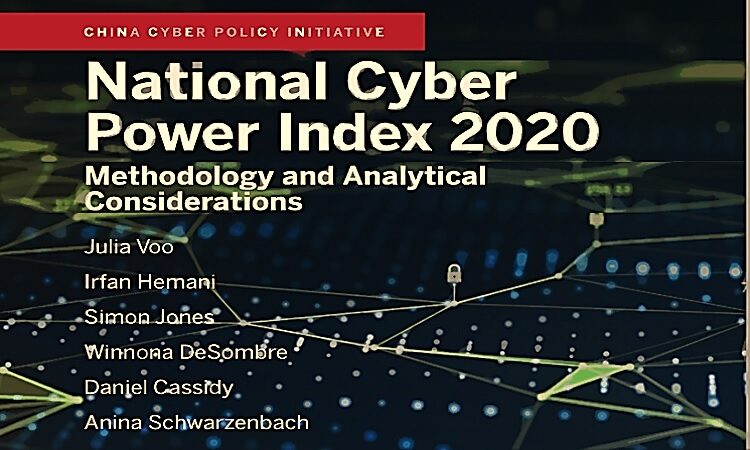Authors: Julia Voo, Irfan Hemani, Simon Jones, Winnona DeSombre, Daniel Cassidy, Anina Schwarzenbach | Belfer Center for Science and International Affairs | Published September 2020
Which is the most powerful cyber nation in the world? A recently published Belfer Center report, National Cyber Power Index 2020, is a new approach to conceptualizing and measuring cyber power at the country level – a multidimensional and disaggregated measure of national cyber power that reflects the complexity of the concept.
The measure distinguishes between seven main objectives of cyber power: (1) Surveilling and Monitoring Domestic Groups; (2) Strengthening and Enhancing National Cyber Defenses; (3) Controlling and Manipulating the Information Environment; (4) Intelligence Gathering and Collection in other Countries for National Security Objectives; (5) Growing National Cyber and Technology Competence; (6) Destroying or Disabling an Adversary’s Infrastructure and Capabilities; and, (7) Defining International Cyber Norms and Technical Standards.
The results provide a richly-layered and informative way of assessing the cyber capabilities of the studied countries.
So which is the most powerful cyber nation in the world? The answer depends on which of the objectives is assessed. While the Report provides an overall assessment and ranking (see Graph 6, p.43), there is much of interest – and some counter-intuitive results – in the detail of the scores across the different objectives and dimensions.
- Overall, the United States (US) comes in first, scoring highest on five out of seven objectives. The US scored the lowest on the objective of national cyber defense, ranking 7th out of 30 countries.
- At No.2 overall, China leads the ranking on cyber defense capabilities, and is in the top 5 for every single objective. These results reflect China’s increasingly dominant position in cyberspace, but also highlight the significant gap in capability between China and the US in most areas.
- Third overall, the United Kingdom scores particularly high in two domains – intelligence and surveillance.
- Russia, which ranks tenth overall, tops the list for the offense objective.
- Australia comes in 16th overall, although scores more highly on some individual dimensions.
“The underlying variables that contribute to cyber power are poorly understood. It is too easy to miss the full spectrum of intentions and capabilities that contribute to a state’s cyber power. Understanding this spectrum is critical for improving a state’s overall cyber strategy and policy.”
Eric Rosenbach, Belfer Center Co-director
h&t note: Australia’s 2020 Defence Strategic Update identified a need to respond to “expanding cyber capabilities and willingness by some countries and non-state actors to use cyber capabilities maliciously”. Expenditure of around AUD 15 billion over the next decade (about 6% of capability investment) is proposed – to provide a mix of offensive and defensive cyber capabilities; to strengthen the intelligence and cyber capabilities of the Australian Signals Directorate (ASD) including growing the ASD’s cyber operations workforce; and to establish a new counter-intelligence capability.
Read the full report or download the pdf (1.49 MB) (external links to the Belfer Centre’s website).

